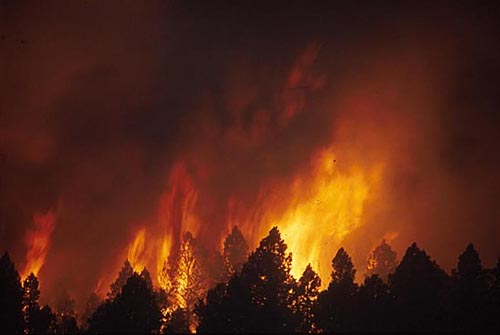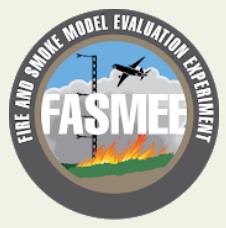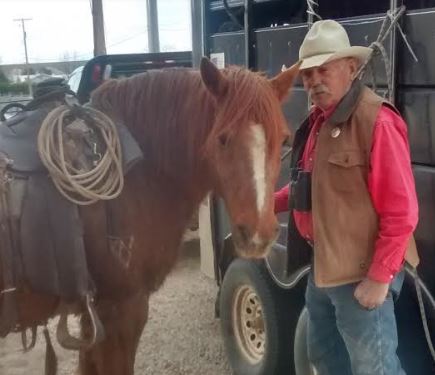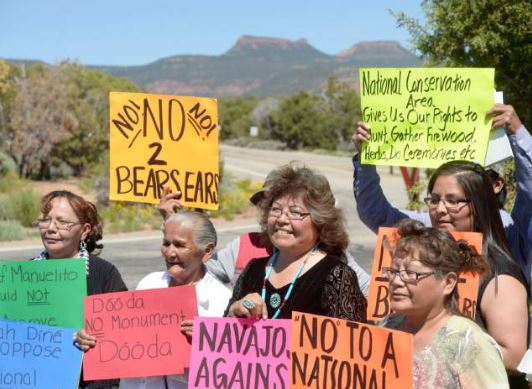by GREG WALCHER on NOVEMBER 8, 2019
What if someone said they planned to burn down your house, but it’s for your own good? They need to study how houses burn, so they can build better computer models to predict future home fires. In the future, therefore, that might help you.
Asinine as that sounds, it is precisely what the U.S. Forest Service (USFS) proposes to do, first in southern Utah and northern New Mexico, then in Georgia and South Carolina. It is part of an incredible scheme called the Fire and Smoke Model Evaluation Experiment (FASMEE). The agency says it needs to study the behavior of giant, fast-moving forest fires, so it plans to set several of them, on purpose, starting this month.
The USFS plan to “study” massive fires might have a shred of credibility if the agency had no opportunity to study these disastrous wildfires before. But the agency has seen over 100 million acres of forests burn over the past 20 years, while doing virtually nothing to reduce the fuel loads or thin the forests to a more natural condition. There are volumes of studies about these catastrophic fires and the massive loss of resources, wildlife, property, and lives they have caused. Several agencies (including USFS) host websites on the subject, and have published numerous studies. Dare we wonder if there is such a thing as “settled science,” a time to stop studying and start acting?
Officials now claim they need to study the effects of these fires on climate change, but in doing so they will release massive amounts of carbon into the air, instead of producing healthy trees that absorb it. The goal of this bizarre plot, or in federal terms, the “expected outcomes,” include “Improved scientific knowledge of the physically coupled fuels–fire–smoke–chemistry system.” As if forest scientists do not understand the chemistry of smoke? Another goal is to create “Exportable methodologies for measuring fuels for fire spread, fuel consumption, and fire emissions models.” That is, bureaucrats and academics (yes, a university is also involved) are collaborating on better computer models.
It is difficult to escape the observation that the forests need better management, not computer models. Voltaire once wrote that “men argue; nature acts.” It is an apt description of how our generation has squandered the greatest legacy of the conservation movement – the national forests. Devastating forest fires are constantly in the news, but a crucial fact rarely mentioned is that these fires are not natural. They are caused by mismanagement, and no management. Indeed, our generation has all but stopped the professional management of public forests, and we are witnessing the disease, death, rotting, collapse, and burning of billions of trees covering millions of acres of previously healthy forests.
Centuries of nature’s uncomfortable balance is easily upset when people and cities move in. So our job is to mimic the role of nature, to maintain the most “natural” conditions possible. We have failed miserably.
Nature had previously kept the growth of forests in check with periodic fires, sparked by lightning. Natural fires burn the brush, grasses, saplings, and small trees so the forest does not grow too dense – but mostly leave older and larger trees undamaged. After Americans began to settle the West, dependent on the forests for wood, they viewed forest fires as crises. Preventing, and extinguishing, fires became a primary goal of forest management for a century. Yet national forests still were not overly dense because the natural role of fire was replaced with continual forest thinning. Forests were logged to provide lumber, recreation, healthy watersheds, species protection, and fire prevention. Then in recent decades, logging became unpopular. Timber sales were all but eliminated in national forests, and completely in national parks and wilderness areas. Logging on federal land plummeted – over 84% since the 1980s. And that management tool was replaced with – nothing.
The resulting unnatural overgrowth is a tinderbox that, when ignited, obliterates the entire landscape in ways that are well documented and understood. Yet political leaders argue, while nature runs the only other course.

The Utah fire “experiment” is not only a waste of tax money. It is an unconscionable waste of valuable forest resources, pollution of the air, and destruction of wildlife habitat. This week I spoke at a State Policy Network conference on a panel called “Fiddling While Forests Burn.” The clear conclusion was that torching a mountainside in Utah will not address any of the major problems confronting our national forests – it will just add a few more statistics.
This column originally appeared in the Grand Junction Daily Sentinel November 1, 2019.




Be Best to Simply Log a bunch, Graze a bunch And do Low Level Winter Burns, EVERY Year.
Since our govt is only ” saving to death ” right at 1.2 Billion acres… They will never run out of acres to manage as described above.
There’s been plenty of Big Out of Control Wildfires w more burning Every year now… Soooo there’s plenty to study too.
Just Where is our governments head?
Being an avid outdoorsman, I have witnessed the devastation to our National Forest over the last 50 years. Once upon a time we had ‘live’ forest…..then the Envirnonmental movement curtailed or stopped logging, then mismanagement began with no logical foresight or common sense! Cattle were removed, wolves were introduced into areas and the forest was left to its natural ways. It was only a short time until the normal wild life then left the areas……why, you might ask….because all animals interact together. Cattleman managed the range they were allotted, keeping trails open, roads maintained, water sources managed, salt and other minerals were put out. Not only did the livestock utilize this ranchers efforts, but so did wildlife. Wild animals are not stupid, and took advantage of the open, well kept trails the cowboys maintained but they also took advantage of the minerals, water and abundant grass.
Now with cattle gone, so I had a majority of the wildlife. Even the birds are not there. What used to be an active vibrant forest, is now very quiet and dead. No activity of animals on trails and no birds singing with joy, trees are dying from bark beetles, and invasive weeds are chocking out the grasses.
Perhaps thee Best thing for old growth forests is simply to burn them.
90% of the USA forests are now Old Growth forests.
55 years ago only 15% of USA forests were old growth.
It’s to bad we squandered such a valuable resource by saving it to Death.